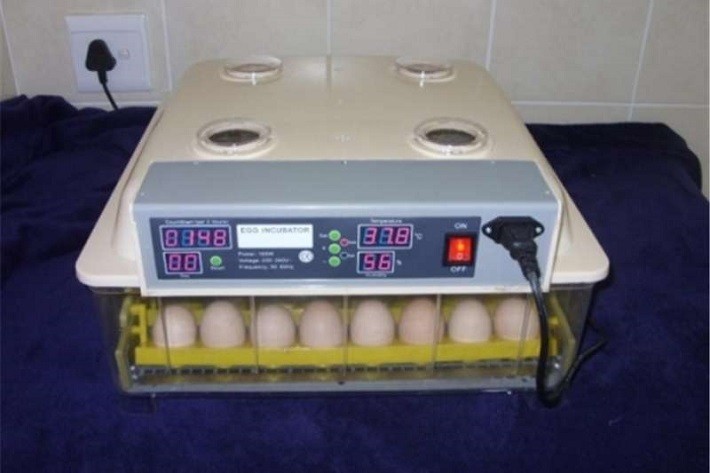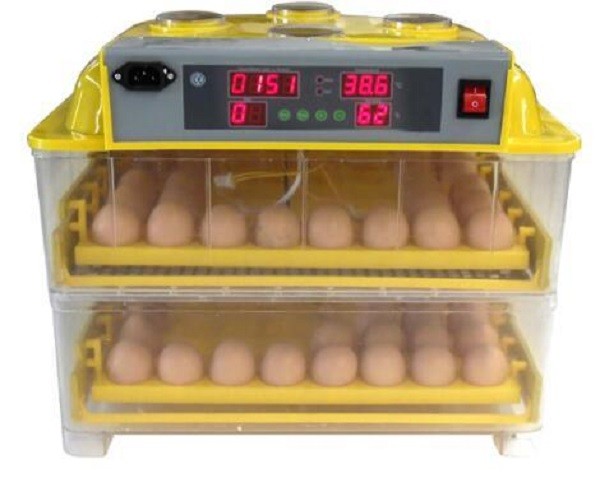Incubators are essential investments in our homes. This is especially for farmers who need to reap big in the chicken farming industry. Humidity occurs when water surfaces get into contact with the air in circulation. This is the primary source of moist air for eggs in these machines. Oxygen is necessary for the development of the embryos. In turn, the eggs get oxygen from the air inside the machine through ventilation. When there are standard levels of moisture in the air, the eggs’ development becomes more specific. Only humidity can enrich the air with water. Through the gaseous exchange process, the eggs get rid of carbon (IV) oxide from the shell.

A Way You Can Control Humidity in Your Machine
You need a hygrometer to measure humidity in an incubator. If the level gets to be low, then it is recommended to increase them.
Learning to Increase Humidity in a Chicken Incubator.
It is vital for poultry farmers to have an idea of the ideal humidity in their machines. This helps the hatching process to go well. If levels are low, then there are adverse effects on the hatching of eggs. High humidity also affects the process negatively.
The recommended humidity is 55% in the early incubation days. Increase these levels as days go by. This is especially in the last three incubation days. The standard level at this stage should be about 65%. This is the ideal level of moisture in the incubator environment. This humidity level helps to complete the incubation process as required. Chicken hatched at this kind of humidity are healthier. The chicks start a new life in their new environment at a good pace.
Two Ways to Increase Humidity in The Machine.

1. Placing a Water Container in The Incubator
This is a way to raise humidity in the machine over a short time. But then, this is not a good way if need to boost the levels instantly. The second option can be ideal in such situations.
2. Using of an Atomizer to Sprinkle
The device sprinkles small amounts of water into the ventilators. In this manner, the levels rise, and the incubating eggs can acquire required moisture.
For someone living in the low humid areas, try to place the machine in a place or room with higher levels. Keep ventilation lower, they can be half-open. Also, reduce the temperatures around the machine by a bit of cooling or lowering the temperatures. This will help improve the amount of water vapor in the air and keep your machine more humid.
Maintaining higher levels of humidity in the hatching process is of great importance. It will ensure overall growth of the hatching chicks. Humidity is an essential influencer in the incubator. It can influence the results of the incubation process. What does this mean? You need to monitor the levels through the hatching period. You need to maintain them adjusted to required standards.
When Should You Increase Humidity?
The incubation process completes in 21 days. You only reap big if you maintained the required conditions for the eggs. The last three days of incubation are crucial. This is from the 19th to the last day of hatching. You need to increase the levels of your machine at this time. On the 19th day of incubation, adjust the humidity levels. Push them from the usual standard level of 55% to about 65%.
Circulation of air is also important in the machine. Get your ventilation as open as possible. It will ensure that the hatching chicks can get out of the eggshell. They will require more air and humidity and this final stage of hatching.
Even if one can witness struggling chicks trying to get out of the shell, patience is essential. Try not to assist them in getting out of the shell. Temptation can be high to help them out at times. Try as much as possible to resist it. This is to ensure the chicks are ready enough to get out of the shell and ready to face the challenges posed by their new environment.
What Can Happen When The Humidity is Low in an Incubator?
Low levels in the machine will lead to undersize chicks due to low development since the chicks lack moisture in the air. On the other hand, the eggs are losing much humidity, through the airspace. This leaves big spaces in the embryo because it has to regulate the cell.
What Can Happen if The Humidity is High?
If the levels inside the machine are high, the eggs can turn dry. The eggs can also weather. This is not good for your hatching eggs. It implies that the eggs will have to lose little or no moisture and the chicks will be large and unable to breathe inside the egg through the airspace. The chicks will have to battle with little space I swell as little air inside the egg. This is a dangerous situation for your hatching chicks.
Controlling High Humidity
The best way to lower levels is by opening the ventilation since the excess air can help in reducing the amount of moisture in the air. One can also add a fan to lower the amount of humidity in the air as well as opening the ventilation of the room and the incubator.
One can also get out the water container inside the machine. If you live in a place where humidity is a bit high, you need to place the incubator in a place with lower humidity. This way, you will maintain the standard set levels ideal for the process.
Conclusion
Normal humidity standards are ideal for hatching. High levels are ideal but try not to keep it too high as such. This can be dangerous to the incubated chicks. Preparations for the next hatch are essential at large. You need to clean your incubator clean. After an incubation period, clean and prepare it for the next hatch. Keep the required set standards to increase your hatch rate.
